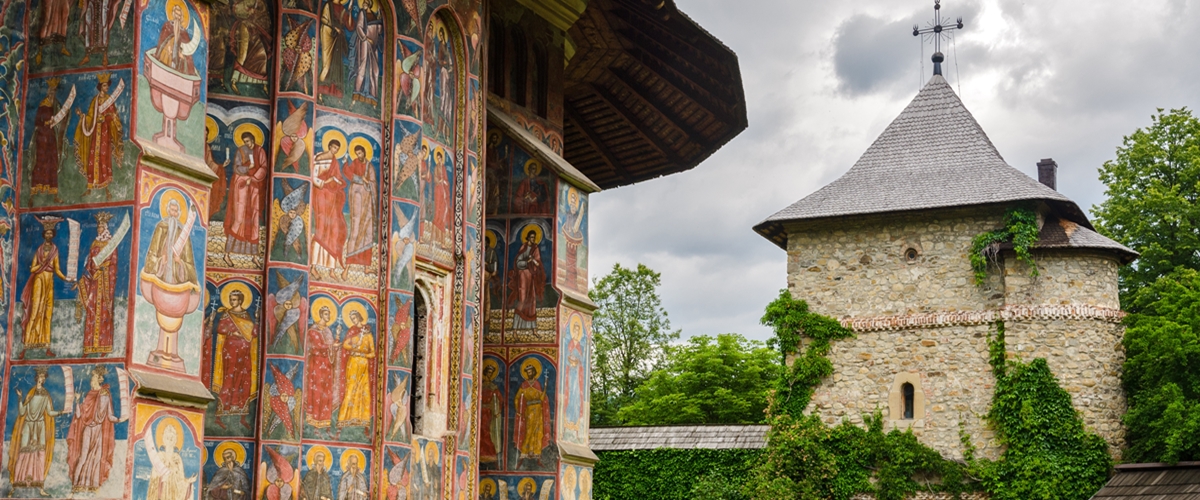Moldovita Monastery
One of the eight painted churches from Romania that are listed on the UNESCO World Heritage List, that all derived their inspiration from Byzantine art from the 15th and 16th century, is Moldovita Monastery. It stands out from the countless other churches constructed at that time due to its remarkable feature: exterior walls covered in paintings depicting entire religious cycles and rare frescoes from the Middle Ages.
The political and educational functions, which attempted to defend and strengthen the Orthodox Church at a period when both Protestantism and Islamism were on the boundaries of the mediaeval Romanian regions, reinforced its spiritual function. Moldavia, a separate province with aspirations of independence, was constantly involved in smaller or larger armed battles with the Ottoman Empire in those days, which exceeded in every aspect, from financial to military resources. Even if only partially, a handful of courageous local princes made a significant contribution to Moldavia's ability to maintain its independence during the tumultuous medieval era.
Beyond their military duties, these rulers carried on a major spiritual role. They proved their close relationship with God by building new churches and providing financial support for the Church, whose impact was strongest. The prince who made the biggest contribution to the growth of the Moldavian style was Petru Rares, the son of Stephen the Great.
The church from Moldovita also includes a burial room between the narthex and the nave and a modest hidden niche, components that earlier appeared at Humor Monastery. It was built on the typical triconch structure and used the Moldavian vaulting technique.
Among the eight UNESCO churches, the paintings from Moldovita Monastery are some of the most stunning. The background is primarily white and dark blue, while the primary hues are red, yellow, and green. With a focus on moral and religious education, a wide variety of religious figures are depicted with accuracy and expertise, their importance and emotions being conveyed.
Manuscripts from the 15th century, involving with the structure of the monastery school and general cultural activities, continue to be preserved at the monastery museum today.
The monastery's courtyard has been decorated with lovely flowers. It is delightful to sit in the monastery's courtyard and take in the beauty of the surrounding flowers and murals. The region of the village nearest to the older church may be the best representation of a moldavian village in its natural environment. The village Moldovita is close to Suceava (70 km) and Iasi (184 km).
Visiting hours:
Mon. - Sun.: 9 AM - 6 PM




.png)




